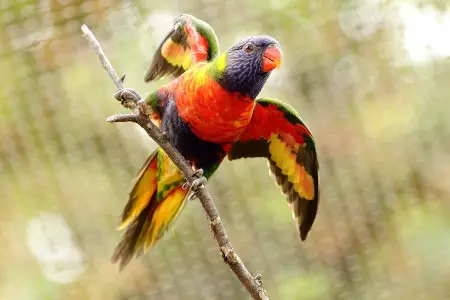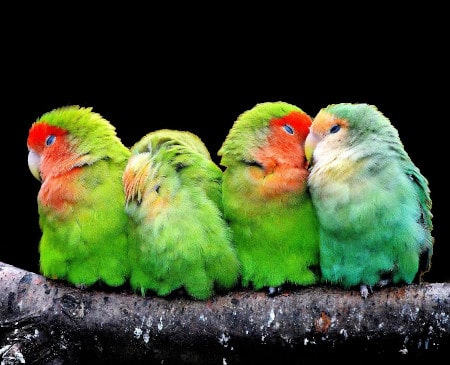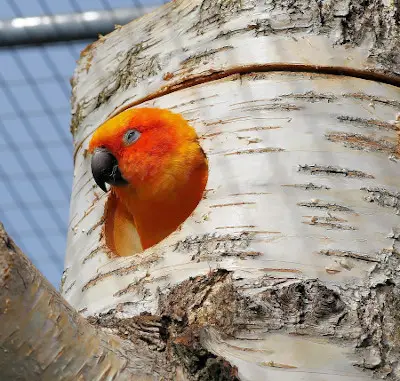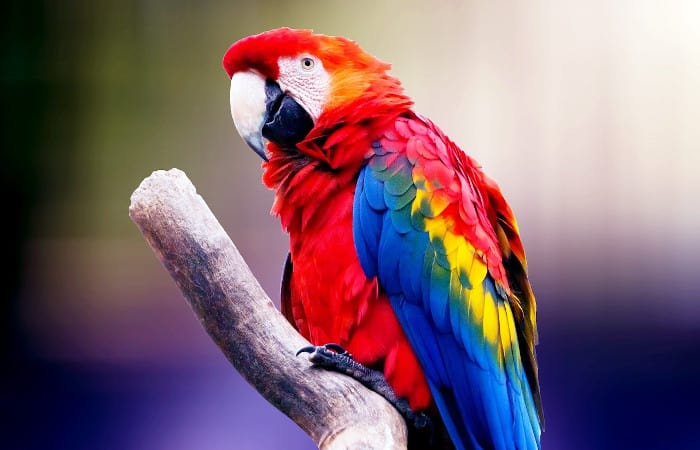Do you know if parrots are cold-blooded or warm-blooded?
A lot of people don’t know the answer to this question, and it’s a bit surprising given how popular parrots are.
Are they like lizards and snakes, which are cold-blooded and need to bask in the sun to regulate their body temperature?
Or are they more like birds, which are warm-blooded and can maintain their body temperature even in colder environments?
In this blog post, we’ll distinguish the difference between warm-blooded and cold-blooded animals.
We’ll also explore whether parrots are cold-blooded or warm-blooded. In addition, we’ll discuss how parrots keep warm at night and during winters.
What is the difference between warm-blooded and cold-blooded animals?
Warm-blooded animals are animals that maintain a constant body temperature.
This is achieved through various mechanisms, such as regulating metabolism and controlling blood flow.
As a result, warm-blooded animals can tolerate a wide range of temperatures and can be found in all corners of the globe.
Cold-blooded animals, on the other hand, rely on their environment to regulate their body temperature.
These animals are mostly found in tropical or subtropical climates, as they are unable to generate their own heat.
Cold-blooded animals are often slower and less agile than their warm-blooded counterparts, but they have the advantage of being able to conserve energy when conditions are unfavorable.
Are parrots cold blooded or warm blooded?
Like all birds, parrots are warm-blooded, meaning that they can maintain a constant body temperature regardless of the external environment.
This is an important adaptation for birds, as it allows them to live in a wide range of climates and to stay active during the colder months.
While parrots come from tropical regions, many species are now found in temperate zones thanks to their ability to regulate their body temperature.
Parrots are covered in feathers, which help to insulate them and prevent heat loss.
When it is cold outside, parrots will fluff up their feathers to trap more heat, and when it is hot they will pant and spread their wings to cool down.
Thanks to these adaptations, parrots can thrive in a variety of different climates.
Are there any cold-blooded parrots?
Parrots are a type of bird that is known for their brightly colored feathers.
There are more than 350 different species of parrot, and they can be found in tropical regions all over the world.
Parrots are warm-blooded creatures, meaning that they are able to maintain a constant body temperature regardless of the temperature of their surroundings.
As a result, there are no cold-blooded parrots.
You may also like: Can Parrots Be Kept Outside?
How did birds evolve as warm-blooded animals?
The ability to maintain a constant body temperature is a crucial adaptation for animals that live in cold climates.
By generating their own heat, warm-blooded animals can stay active even in freezing conditions.
This adaptation is particularly important for birds, including parrots which are able to fly long distances in search of food.
But how did birds evolve as warm-blooded animals?
The most likely explanation is that they inherited this trait from their reptilian ancestors.
The first reptiles appeared during the late Permian period, roughly 250 million years ago.
These early reptiles were largely ectothermic, meaning that they relied on external sources of heat to regulate their body temperature.
However, some reptiles began to develop internal heat-producing mechanisms, laying the groundwork for the evolution of birds.
Over the course of millions of years, these early warm-blooded reptiles gave rise to the first birds, which eventually came to dominate the skies.
How do parrots maintain their body warmth?

Parrots are tropical birds, and as such, they need to maintain a constant body temperature in order to survive.
One way they do this is by perching in the sun.
The sun’s heat helps to warm their bodies, and it also dries their feathers, which can become wet from rain or dew.
Another way parrots maintain their body warmth is by fluffing their feathers.
This creates an insulating layer of air around their bodies that helps to trap heat.
In addition, parrots often huddle together in groups, taking advantage of the combined body heat of all the birds.
By using these various strategies, parrots are able to maintain their body warmth even in the cool temperatures of the night.
You may also like: Can Cockatiels Drink Cold Water?
How do parrots stay warm at night?

For many animals, the coldest time of day is at night, when they are asleep and cannot move around to generate heat.
So how do parrots manage to stay warm during the long hours of darkness?
One way is by tucking their heads under their wing.
This helps to insulate the body and prevent heat from escaping.
Another way is to rest one leg in their feathers.
The feathers provide an additional layer of insulation, and the leg in their feathers cut down the heat loss, helping to keep the body warm.
Finally, parrots will sometimes shiver in order to generate heat. By activating their muscles, they can create enough heat to keep themselves warm until dawn.
As a result, parrots have a variety of strategies for staying warm at night.
You may also like: Why Is My Budgie Sleeping So Much? Should I Be Worried
How can you keep your parrot warm in winters?

Parrots are tropical birds, which means they are used to warm climates.
As a result, they can quickly become cold in environments with cooler temperatures.
If you live in an area that experiences cold winters, there are a few steps you can take to help keep your parrot warm.
First, if the cage is normally kept outdoors, move it indoors for the winter months.
Second, make sure to keep the cage away from doors and windows, as drafts can further chill your parrot.
Third, consider covering the cage with a light blanket or towel to help insulate against the cold.
Finally, provide extra bedding material for your parrot to nest in, such as a soft blanket or towel.
By taking these steps, you can help ensure that your parrot stays warm and comfortable throughout the winter season.
Conclusion
Parrots are warm-blooded animals, meaning that they can maintain a constant body temperature regardless of hot or cold weather.
They have evolved various strategies for staying warm, such as perching in the sun, fluffing their feathers, and huddling together in groups.
At night, parrots will tuck their heads under their wing or rest one leg in their feathers to help insulate their bodies.
If you live in a cold climate, there are a few things you can do to help keep your parrot warm, such as moving the cage indoors and providing extra bedding material.
By understanding how parrots stay warm, you can provide the best possible care for your parrot.
